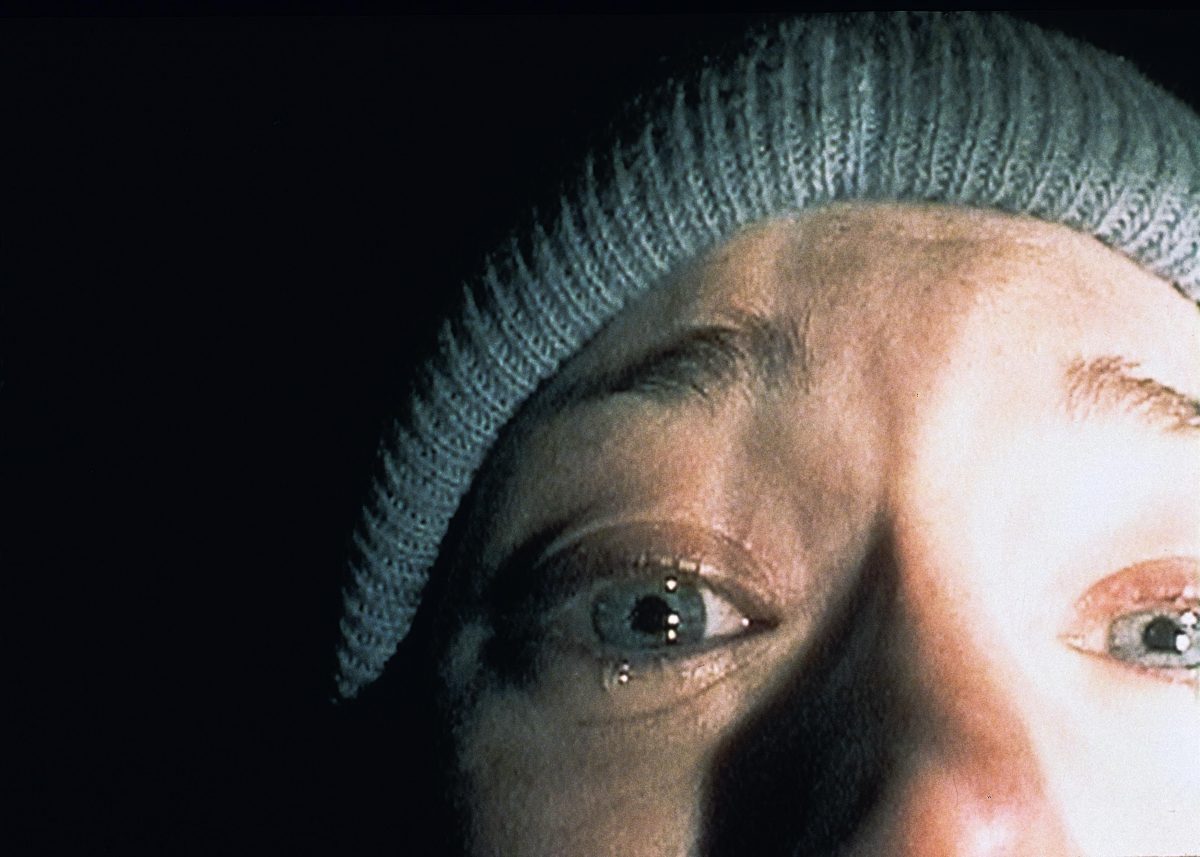What is Found Footage Horror?
If you’re newer to the horror community, then you may not be aware of the found footage style that makes up a widely celebrated part of the genre. That being said…
Relatability and Morbid Fascination
The dark, savage aspects of human nature have a certain allure that cannot easily be disregarded. We’re more likely to see characters who are awkward, trashy, creepy, oblivious, or skeptical throughout the movie—the found footage style has been known to explore those traits more fully since it needs to feel like candid camera footage. As a culture, we tend to have a fascination for things that we can identify with and many people find reality entertainment more relatable—while others find them to be like a trainwreck they can’t stop watching.
Fact or Fiction?
When The Blair Witch Project premiered in 1999, the world witnessed what could reasonably be believed to be real footage of three student filmmakers. These students would go on to disappear while filming their investigative documentary; their footage, as revealed by the movie, was later found by a third party and published for the world to see. The documentary-style film allowed the audience to see through the eyes of the protagonists. We were able to step into their shoes, with a growing sense of trepidation, as they dove into the gruesome legends woven into the history of Burkittsville, Maryland (Derry 228).
Indie Horror Creation
There are only really a handful of found-footage films that directly benefited from the cult following The Blair Witch Project developed at the turn of the century. Regardless, the horror genre branched out into the of found-footage and made it feasible for indie filmmakers to put themselves out there with a low film budget and then expect a larger profit margin in return. Since the mockumentary style of The Blair Witch Project required nothing more than handheld cameras, or more recently, a GoPro. The technology was no longer a barrier. There was a preference of unknown faces that were hired for talent because it would leave the audience with a more authentic quality of film. The promised result was an otherwise cheaply produced finished product with no over-the-top special effects. This style lent directly to the perceived authenticity of the events that would occur within the confines of the film (Derry 229).
Growing Popularity of Reality Horror
The rising popularity in this “reality” horror soon caused the film budgets of these types of movies to rise significantly and the profit margin to subsequently decrease—but why is that? Because, when you think about it, if a found footage film is properly executed they can be an indie filmmaker’s dream. Then again, there also has to be the consideration that most indie horror filmmakers would love to have their film be the next Blair Witch Project. Most just aren’t naive enough to believe that their film will achieve that level of notoriety. Even a movie such as Cloverfield (2008), arguably one of the highest budgeted movies in the style can showcase archetypal lo-fi aesthetic (Kring-Schreifels), but then they blow their budget on special effects. Explosions, enormous alien monsters, and entire buildings being knocked over certainly didn’t help them to cut costs. If their featured talent hadn’t done a wonderful job at performing their roll, it would have been a lot less convincing (although, let’s be real, none of us thought it was real—unlike many with The Blair Witch).
Convincing Storytelling
Thankfully, it’s no longer the believability factor, as much as it is the feel of authenticity and the purity of the scares or creepy story they tell. So, it’s now far less important that these films are regarded as found footage, if we’re distinguishing films being true to the style. If we’re looking for a true found footage film, we must consider movies that fully utilize a diegetic camera, which means that both the camera and if applicable, the person behind it are part of the story. Since the diegetic camera in found footage films is acknowledged by the characters, it can be considered a prop of the fictional world (Turner 8).
Whether we are witnessing the events of the film through security footage, or we’re experiencing the events as a camera-wielding character or part of a film crew, we’re left with room for interesting developments. Even though I won’t deny that security footage style is a diegetic camera, it does have the drawback of removing the closeness we’ve obtained with the character behind the character. When we’re seeing through the camera being held by one of the characters, it feels like we’re literally seeing through their eyes.
The Eyes of Narration
Going back to the previous example of Cloverfield we rarely see the character behind the camera and the longer we go without acknowledging that character, the more closely we get pulled into the him. When he’s nosey, we’re also inclined to be curious of what’s going on—likewise when he’s in a situation where he’s afraid for his life, the audience feels uneasy and fearful. I feel like this not only happens because we’ve identified as the character behind the camera, but because if that character dies, then we’re unaware of where the story will take us next. Typically, someone else is conveniently around to pick up the camera in order to continue to film. We’ve been allowed to suspend our disbelief just long enough to identify as the person behind the camera (Turner 4).
Anything that allows the viewer to more closely relate to the film or the characters within tends to provide a more interesting viewing experience. Whether it’s considered a diegetic camera film, a found footage film, or a “reality” horror film, if “the viewer cannot maintain distance between the events of the story and their own viewing,” then they cannot help but becoming part of the story (Turner 8).
The Beginning of Found Footage Horror
The Blair Witch Project isn’t considered the first found footage horror ever created—that honor is regularly attributed to Deodato’s Cannibal Holocaust (1980) regardless of whether it was deserved or not. After watching Cannibal Holocaust I started to wonder why it was declared as being found footage at all—sure it utilized the technique for the recovered documentary crew’s film, but there was also a significant part of the movie that is noticeably shot with an objective camera. I submit to you that if we’re going to consider Cannibal Holocaust a found footage film, that we also consider Hellraiser: Revelations (2011) a found footage film.
Reality Entertainment
In many ways, shows like “The Real World” and “Cops” were more of an influence on the initial popularity of a movie like The Blair Witch Project than its found footage predecessors (Kring-Schreifels). Like the reality television trend that people were already enjoying, The Blair Witch Project blended fact and fiction; which appealed to the landscape of entertainment of the time and has helped it continue on as the benchmark for all indie horror creators. So despite the fact that The Blair Witch Project isn’t considered the first of its kind, it still held a unique draw for younger generations of adults who were already immersed in the trend of reality television.
YouTube and Access to the Internet
Just six years after the film’s inception, the world saw the arrival of YouTube which made it even easier to blur the lines between fact and fiction; it’s been noted by those involved in the film, that their successful marketing tactics slipped through a narrow window of an audience that was on the brink of overly accessible information. That, in today’s world, someone looking for more information on Heather Donahue, the female lead, would be able to find with no uncertainty that she was in fact, an actress who had not gone missing at all (Kring-Schreifels). Still, filmmakers Daniel Myrick and Eduardo Sanchez drew on the most important aspect of creating horror by heightening tension and fear; they accomplished this by way of primarily composing the movie as POV shots which limit what the audience sees and creates feelings of anxiety (Turner 16).
Acceptance of New Styles
The Blair Witch Project took a simple and otherwise unprofound concept and made something that rocked the entire genre of horror (Derry 229). Rather than spur a new series of films, however, it signaled the beginning of almost a full decade with no overly notable films in the style (Derry 230). Hill explains that “horror nostalgia emerges precisely when new generations of audiences have embraced more recent developments in horror,” which leads to a sort of conservation of horror as it was when they first found their love of the genre (Hill 101). So when found footage films were making their way into the genre, children of the eighties were clinging to their late-era slashers like Scream and the newly emerging torture porn of Hostel and Saw. There was also an overwhelming boom of paranormal and supernatural horror films that were created in the 2000s.
Unrepeatable Success
Fans of the horror genre are known to form an emotional attachment to the version of a film they see first, regardless of which one is considered the better film. As a result, those who saw The Blair Witch Project during their youth are more likely to prefer the original to the remake Blair Witch of 2016 (Hill 101). It was clear that a remake of The Blair Witch Project would not be as successful as the original; not only because the guerrilla-style marketing campaign couldn’t be replicated, but a remake would hold less appeal for those who enjoyed the original film (Hill 102). Over twenty years since its premiere and there are still people who look back at The Blair Witch Project wanting answers. Of course, this isn’t because they still believe (if they ever did) that it was a true documentary, but because the movie left them with questions—namely, what does the Blair Witch actually look like?
There is no denying that what The Blair Witch Project accomplished was phenomenal. From the boots-on-the-ground marketing campaign to the missing person posters designed to boost the level of authenticity of the film, the filmmakers utilized tactics that could never again be repeated. The nostalgia for a time since passed contributed to the success of The Blair Witch Project and in essence has contributed to the success of many of the found footage films that have come since.
Works Cited
Hills, Matt. “Horror Reception/Audiences.” A Companion to the Horror Film, by Harry M. Benshoff, Wiley Blackwell, 2017, pp. 90–108.
Kring-schreifels, Jake. ‘The Blair Witch Project’ at 20: Why It Can’t Be Replicated. 30 July 2019, www.nytimes.com/2019/07/30/movies/blair-witch-project-1999.html.

Georgia-based author and artist, Mary has been a horror aficionado since the mid-2000s. Originally a hobby artist and writer, she found her niche in the horror industry in late 2019 and hasn’t looked back since. Mary’s evolution into a horror expert allowed her to express herself truly for the first time in her life. Now, she prides herself on indulging in the stuff of nightmares.
Mary also moonlights as a content creator across multiple social media platforms—breaking down horror tropes on YouTube, as well as playing horror games and broadcasting live digital art sessions on Twitch.



